Before we start: Install macOS to an external hard drive is necessary in some cases. Follow the guide to do the job step by step. Also, you can use Donemax Disk Clone for Mac to clone Mac startup disk to external drive and make a bootable drive easily.
PAGE CONTENT:
If you know how to install macOS to an external hard drive, you may try out everything new in macOS Tahoe/Sequoia or others without risking your present system. Suppose you find that the latest macOS is unreliable, incompatible, or unpleasant in any way.
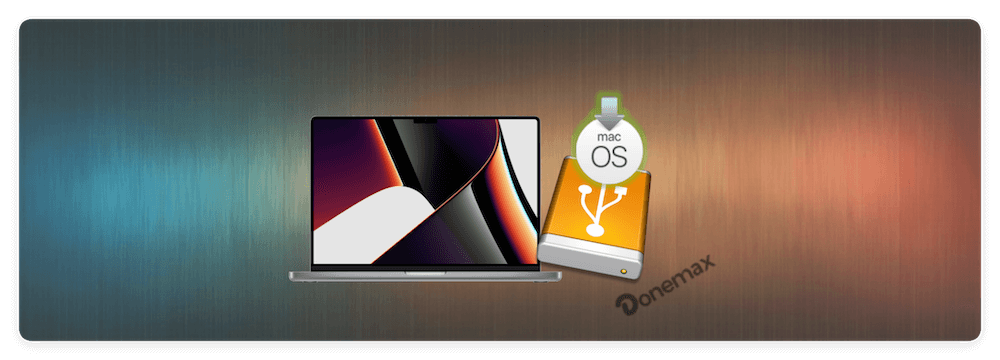
In that case, you may easily reformat the external hard drive and use it for other uses, such as archival storage. Let's find out how to install macOS on an external hard drive.
Steps to Install macOS to an External Hard Drive
To install macOS to an external hard drive smoothly, follow the instructions below steps by step:
Step 1. Get The Drive Ready For Installation
You may install macOS by following these steps. However, the procedure may be tweaked depending on whether you use an internal or external disk.
- To use the external drive with your Mac, you must first connect it to the computer.
- Use the shortcut Cmd + space to open the Spotlight search and then begin typing Disk Utility to open it.
- If you're using High Sierra or later, you'll need to choose View from the menu that appears just below the close and minimize buttons before continuing. Simply choose the option to show all devices. Now, the external volume may be seen beside the root disk.
- Ensure the external drive is selected in the sidebar (the following step won't work if you merely choose the volume).
- Choose the Erase option. To successfully reformat the disk, you must first delete all data.
- Naming your drive "External macOS" or "USB" is a good way to keep track of it.
- Format your hard drive as APFS, or Mac OS Extended (Journaled).
- Set the Scheme to GUID Partition Map.
- Click Erase. Wait as Disk Utility sets up the disk and creates the partition (this can take a few minutes).
- If you're finished, choose the Done button.
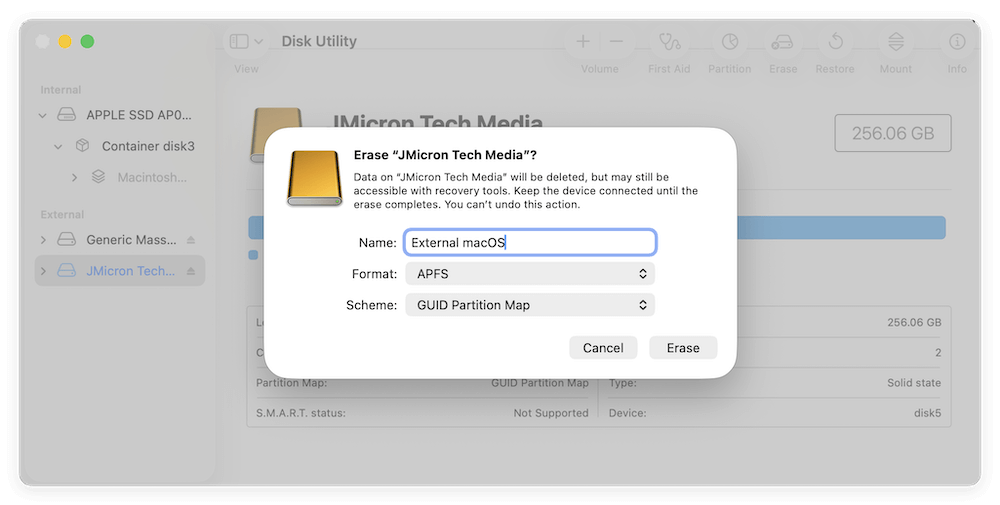
Your external storage has been changed to the name you specified and is now prepped for the installation of macOS, but there is one more step you must do before proceeding.
Step 2. Obtain The Mac OS Installation Files
You must first decide whether you wish to use a beta version of macOS, a fully released version of macOS, or an earlier version of macOS. As the installation for macOS Sequoia is available for direct download from the App Store, this is the simplest of the steps.
- On your Mac, open the App Store.
- To find "macOS Sequoia," just use the search box and click the Return key.
- Click on the result labeled "macOS Sequoia."
- To begin downloading the installation for macOS Monterey, choose the Get button.
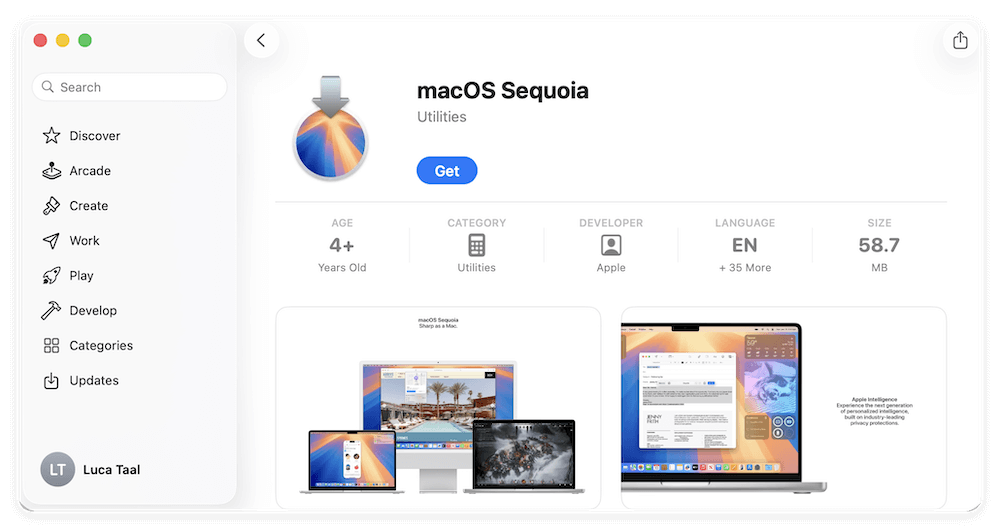
The downloaded installer may be located in the Applications folder, just like any other software obtained from the App Store. The app is called "Install macOS Sequoia."
Step 3. Install macOS On The External Disk
Install the beta or other Mac operating systems now on your external storage.
- To install macOS Sequoia, Sonoma, or any other version of macOS, launch the Finder, go to the Applications folder, and double-click the installer's icon. Additionally, Spotlight may be used to locate it (press Command and Space and type the name of the OS).
- To launch the installer, click here.
- A window should be opened (check the Dock if not). You'll be prompted to continue setting up macOS Sequoia (or whatever) after clicking Continue.
- Accept the terms of the software license contract.
- Click Show All Disks after that—this is crucial. If you don't wish to install it on your primary hard disk, do not choose "Home."
- Select the external drive. Hit the Continue button.
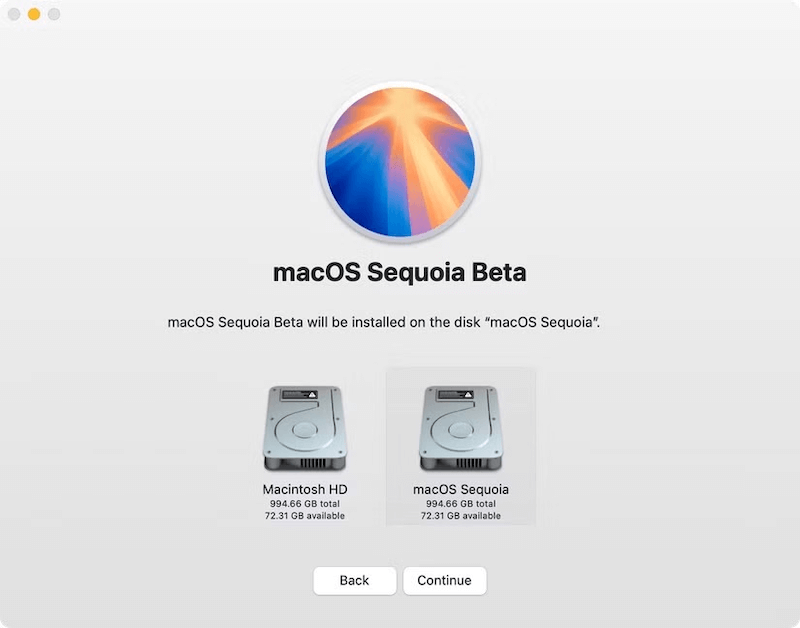
Please be patient as the drive's new version of macOS is installed. Be patient; if the program says it will only take 10 minutes, it's probably not telling the truth.
🚨 Warning: If your external drive wasn't formatted as a GUID Partition following the instructions above, you might encounter problems.
Step 4. Use The External Disk To Run macOS.
Your external disk may be used in one of two ways to run a version of macOS:
Option 1: Always use external disk as startup disk
Proceed to Startup Disk in System Settings > General.
Click Restart after choosing the external disk you want to use to boot the Mac.
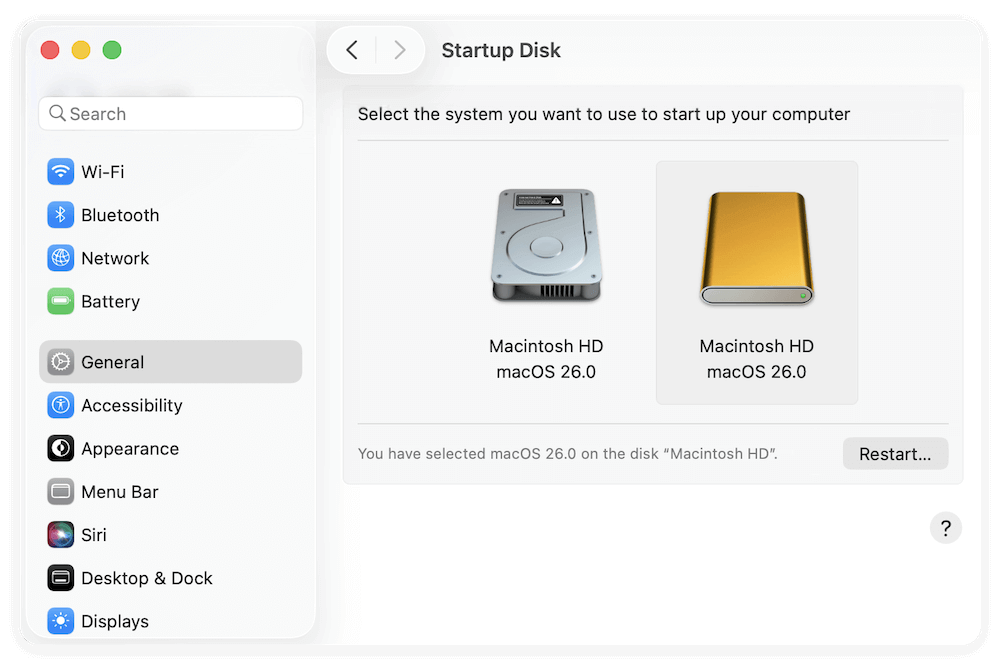
Options 2: Only boot from external disk once
On an Intel-based Mac, press and hold Option/Alt during startup to access the boot menu, whereas on an Apple Silicon Mac, pressing and holding the Power button will bring up the boot menu. Choose the drive you want to use to boot the Mac.
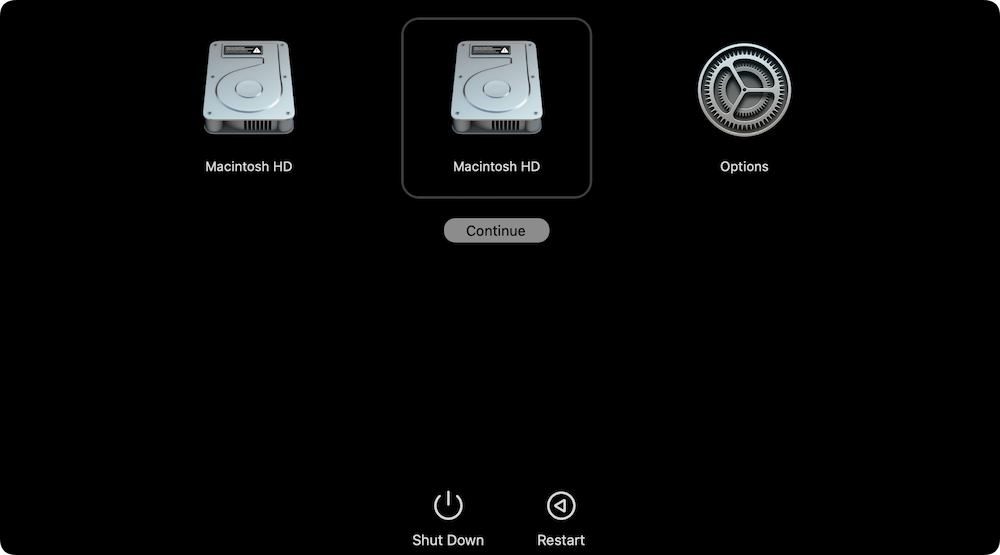
Once the desired version of macOS has been installed on the disk, additional updates may be installed with a few clicks in System Settings.
Clone macOS to External Disk Using Cloning Software
There is another way to make an external bootable macOS drive - cloning the Mac startup disk to an external hard drive directly. In this way, you can make an exact copy of the Mac startup disk. You can get a bootable external hard drive without reinstalling macOS and applications.
When you want to clone your macOS to an external hard drive, the disk cloning application is a good help. Donemax Disk Clone for Mac is a powerful disk cloning application, it can help you securely clone Mac's startup disk to an external hard drive and make it be bootable.
Donemax Disk Clone for Mac
- Clone HDD, SSD, and external storage device on Mac.
- Make a bootable clone backup for macOS.
- Create disk image backup for Mac.
Now, follow the steps below to clone macOS to an external hard drive:
Step 1. Open Donemax Disk Clone for Mac on your Mac and connect the external hard drive to your Mac. Just choose disk cloning mode - OS Clone.
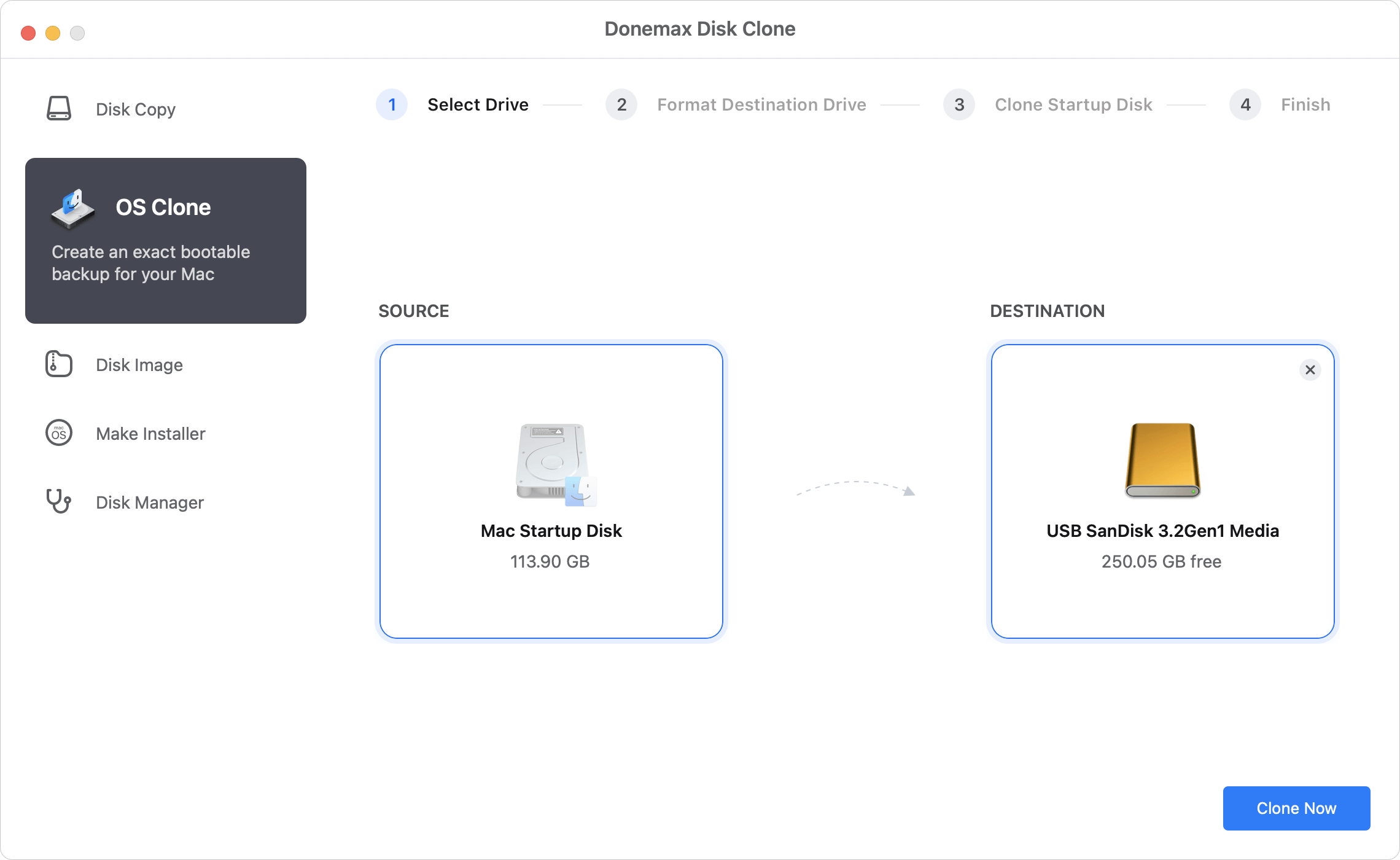
Step 2. Select the external hard drive as the destination drive, click on Clone Now button to securely clone all data from your Mac startup disk to the external hard drive.
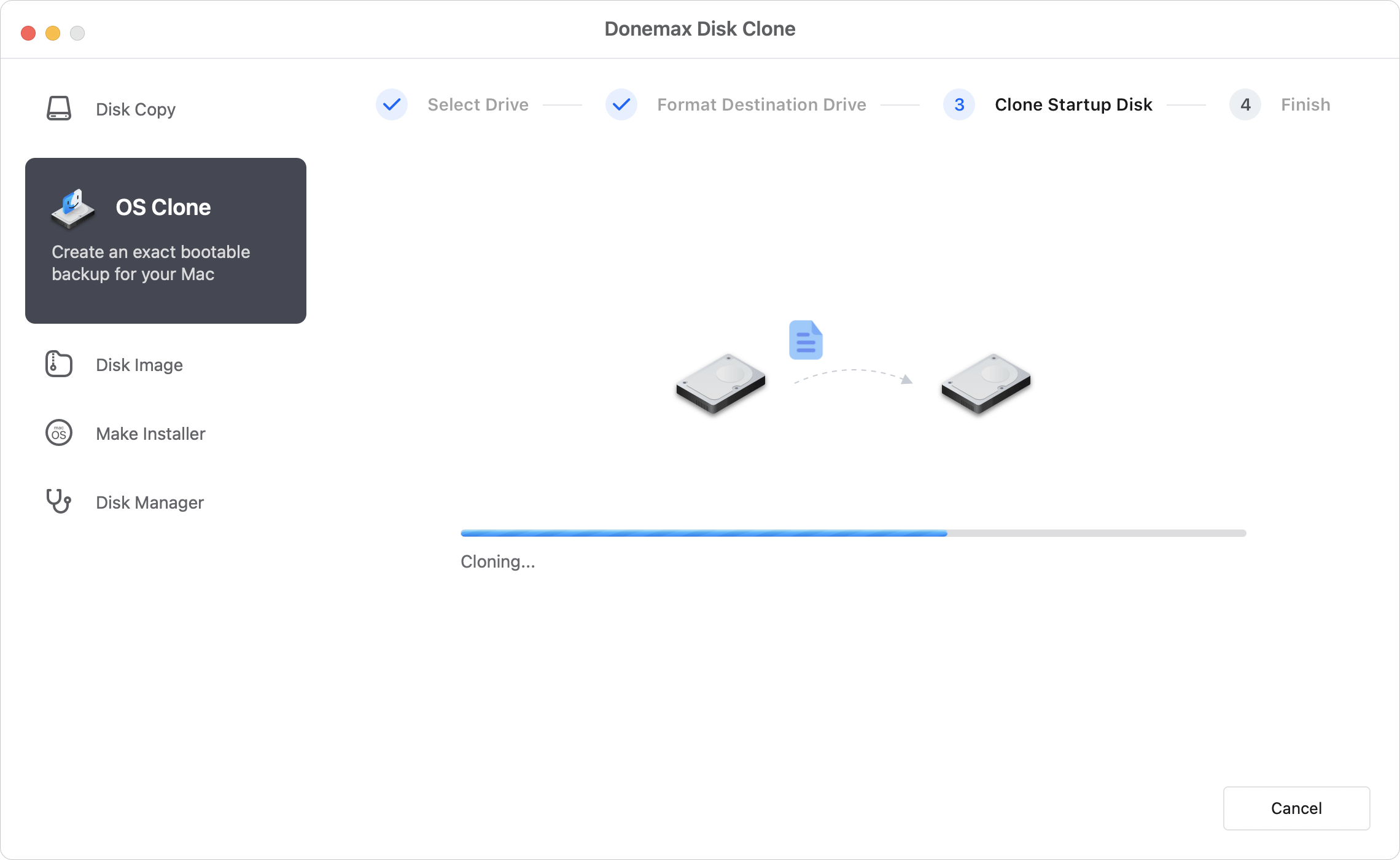
Step 3. All data including macOS data, settings, apps, files will be cloned to the external hard drive. Once the process gets finished, you can use the external hard drive as a bootable disk.
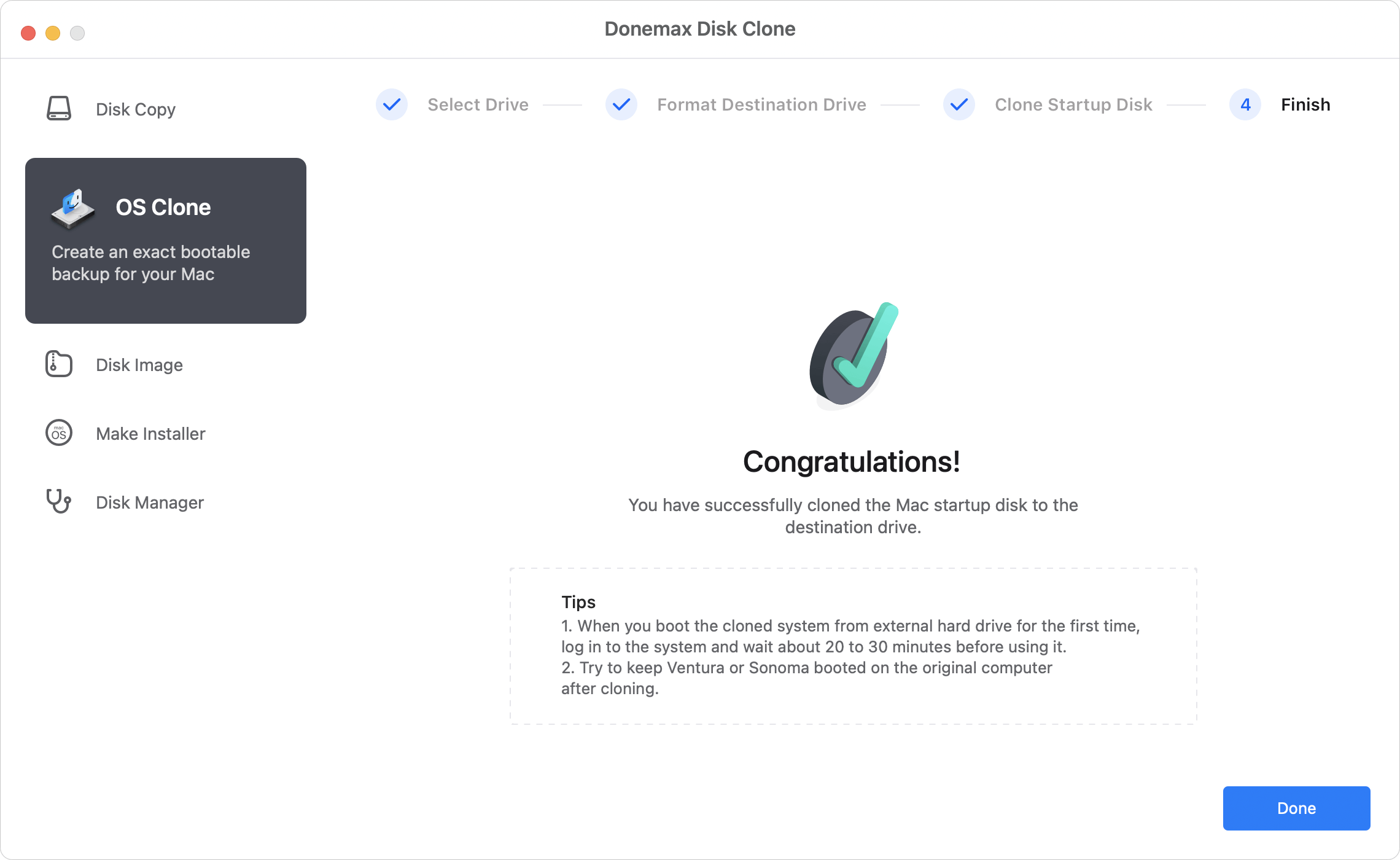
Conclusion
Anyone may learn how to install macOS onto an external hard drive by following the steps outlined in this article. Once you've mastered this ability, you'll be better prepared to update your primary Mac system without worrying about occasional problems.
To make the process simple, you can also clone the bootable internal Mac system disk to an external hard drive directly. Donemax Disk Clone for Mac can help you make a full and bootable clone for Mac. It's a simple and fast way to install or back up macOS to an external hard drive.
FAQs about Installing macOS to an External Hard Drive
Yes. There is no problem to install macOS to an external hard drive. Also, Mac supports booting from a bootable external hard drive.
In the following cases, you may want to install macOS to an external hard drive:
- Test beta versions of macOS.
- Fix startup issues of internal Mac system disk.
- Running multiple macOS versions on the same Mac.
- Make software test environment without affecting the main disk.
Yes. With a reliable disk cloning software, it's able to clone the macOS to external hard drive and ensure it's bootable. Here we recommend Donemax Disk Clone for Mac.
- Download and install the software on Mac.
- Connect an empty external hard drive to the computer.
- Run Donemax Disk Clone for Mac and choose OS Clone.
- Select the external drive as destination and click Clone Now.
- Once it's done, change the external drive as startup disk and check if it's bootable.
Here are the steps to boot Mac from a bootable external hard drive:
- Click Apple menu and select System Settings.
- Click General and then choose Startup Disk option.
- Choose the bootable external hard drive and click Restart button.

Donemax Disk Clone for Mac
An award-winning disk cloning program to help Mac users clone HDD/SSD/external device. It also can create full bootable clone backup for Macs.
Related Articles
- Jul 23, 2025How to Clone Hard Drive on MacBook Pro?
- Aug 15, 2025How to Clone Disk on Mac OS X 10.11 El Capitan?
- Aug 08, 2025How to Clone FAT/exFAT/EXT Hard Drive on Mac?
- Jun 16, 2023How to Clone Mac Hard Drive to External SSD? 2 Methods to Try
- Apr 07, 2024How to Clone Mac Data To WD My Passport External Hard Drive?
- Feb 22, 2024How to Clone Mac SSD to A HDD?

Charles
Charles, who lives in Sydney, Australia, is an editor & writer of Donemax Team. He is good at writing articles related with Apple Mac computers, Windows operating systems, data recovery, data erasure, disk clone and data backup, etc. He loves reading and playing tennis in his spare time and is interested in testing new digital devices such as mobile phones, Macs, HDDs, SSDs, digital cameras, etc.

Gerhard Chou
In order to effectively solve the problems for our customers, every article and troubleshooting solution published on our website has been strictly tested and practiced. Our editors love researching and using computers and testing software, and are willing to help computer users with their problems
